Last Updated on January 2, 2024 by Matt Greene
*Read our review guidelines.
It's time to decide, do you want distance, spin or feel? Or a combination of all? We can get all three in one, but at a very premium price. I have hit every golf ball you can imagine and I've found that depending on your ability, you must pick a priority or two. That is how you find the best golf ball for 85 to 95 mph swing speed.
Do you know your priority? If not, I will help you get there.
At a swing speed of 85 mph to 90 mph, you will fit into most golf balls. But the overall best ball for average swing speeds like this is the Kirkland Signature for feel and performance. The other option is the Taylormade Tour Response. These balls both factor in all three priorities.
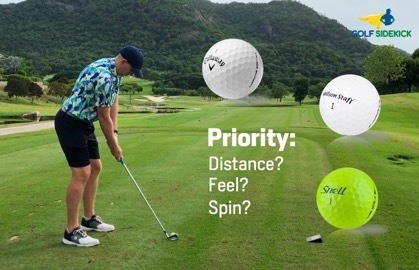
The Best Golf Ball for 85 mph Swing Speed (including 90 mph)
- KIRKLAND SIGNATURE (editors choice)
- Taylormade Tour Response (softer low compression urethane ball)
- Srixon Soft Feel (best bang for the buck)
- Srixon Q Star (best for long straight drives)
- Volvik Vivid (best for distance and looks)
- Mizuno RB 566 V (best for cold weather)
Kirkland Signature (urethane)
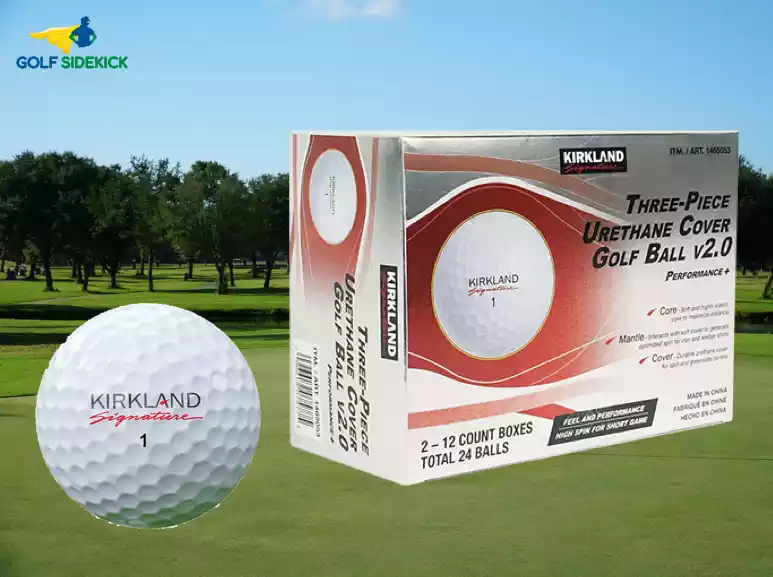
I cannot find anything to dislike about Kirkland Signatures. You can buy a dozen or more for peanuts and game a golf ball that gives you premium performance and the soft feel of a urethane cover. I am converted and believe the hype since I got 24 of these in the USA and played with them at Pebble Beach, Spanish Bay, and beyond.
The Kirkland Signatures are long BUT they hold greens with ease. They do spin after well struck shots, but not in a way that is uncontrollable. It will be a big difference for you if you move from a surlyn ball to the urethane of the Kirklands. I found there was actually a GAIN in yardage with the Kirklands and the balls sit down where they pitch. That's at a pretty high swing speed, so you may experience slightly less 'rip' with these balls.
Whether you're hitting out of a wet bunker or with a brand new wedge, these balls hold up very well, even compared premium urethane balls. You can go a full round with this ball and just keep using it. This is the perfect golf ball for mid handicappers because it's premium, urethane covered but it's at a price point where you don't feel bad about losing one.
It's very different when you're paying $4-$5 for a premium ball. I cannot stress this enough - the feeling of freedom when you don't worry about losing a golf ball is huge. When you don't care about losing balls, strangely, you lose less. The Kirklands are the gateway to that feeling. That's what makes the Kirklands so special. I played a 73 and a 71 at Pebble Beach and used Kirkland. You can enjoy that freedom too.
Reasons to buy
Cons
Taylormade Tour Response
Firmer feeling urethane covered Tour quality ball
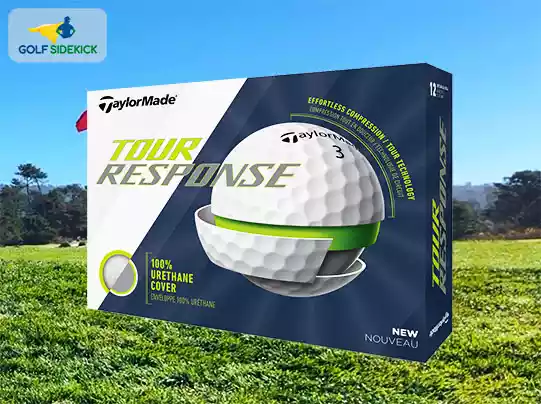
The Tour Response is the upgrade to the Project (a) which to be fair, is a brilliant ball on its own.
The compression is slightly lower at 40 but the multilayer core coupled with the thin urethane skin makes this a lovely ball for distance and bite.
In fact, you can see in one of my videos here, I hit a 285 yard carry drive with a Project (a) to land on the green on hole 4. The Tour response is merely a repackaged Project (a) so if you prefer a bit more friendly on the budget golf ball...check out the Project (a) too!
Reasons to buy
Cons
Srixon Soft Feel
Longer drives with moderate feel around the greens
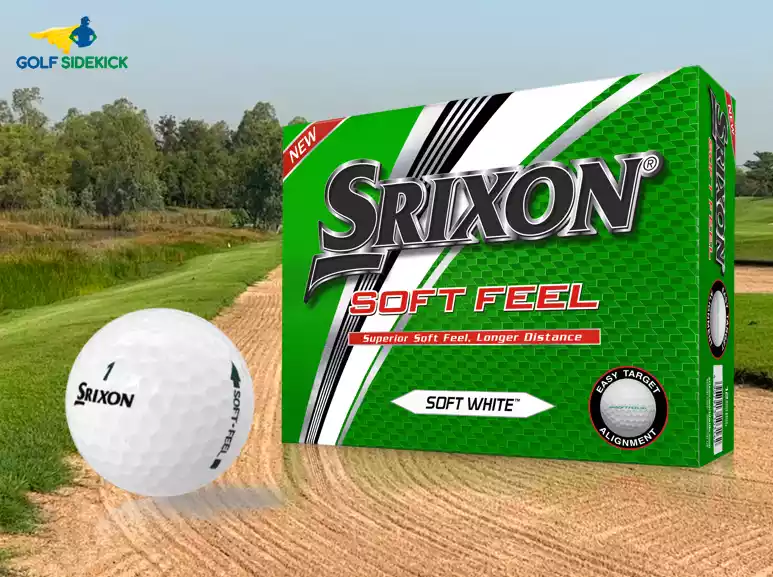
It's a testament to the quality of this line of golf balls; I played this ball as far back as 2006 and when I was looking for a new ball recently, I was advised to try the Srixon Soft Feel while playing off a 13 handicap. This was the gateway drug that got me looking at all these balls.
It's a two-piece construction in it's 11th version but Srixon have reduced the compression to 60. That's more moderate than the ultra low trend at the moment and great for us. The implication is that the distance from the tee with more moderate compression is more impressive than with the compressions below 50 at our average swing speeds.
Srixon have also reduced the thickness of the cover and increased the softness. This added softness is the biggest contributing factor to spin around the greens and the Soft Feel delivers with one of the better two-piece balls for holding greens. It's not going to be zipping back, let's not over-exaggerate, but they'll be streaks ahead of the HARD lake balls you've been hitting.
I play a lot of rounds with the Soft Feel and a couple sleeves are always in my bag probably because of sentimental reasons but it's a really fun ball and so well priced - I think what made it so special to me is that it was the first ball I tried. And it got my mind out of thinking about losing $4 balls and into thinking about smacking $1.50 balls smoothly.
Reasons to buy
Cons
Srixon Q Star
Firmer feeling distance booster
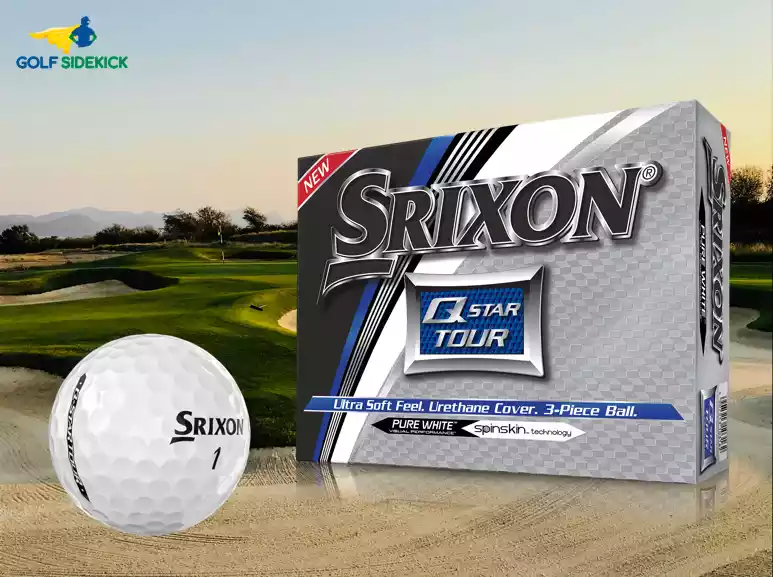
There are two models in the Q Star range with the Q Star being for more distance and made of 2 pieces (a core and a surlyn cover) while the Q Star Tour is a bit softer for more feel with a urethane ball and I urge you to have a look at it - easily one of my favorite golf balls. Both offer comparable distance. The main difference is in the feeling of the ball, where if you prefer a softer feel ball, the Q Star Tour is good for you. If you prefer a firmer feel, choose the Q Star.
I like the Q Star as the best golf ball for 85+ mph swing speed if you're looking for straight distance. Expect longer and straighter long iron & wood shots with it. The ball definitely goes long but what's interesting is how it wants to go straight without the sideways slice or hook.
Most golfers find the feeling off the face firm and they compare it to a rock but purely in terms of accuracy and distance this golf ball will suit the majority of weekend golfers who are looking to add more fun to their game with longer straighter drives. Who doesn't want a long ball in the fairway?
Reasons to buy
Cons
Volvik Vivid
Good looks with performance to boot
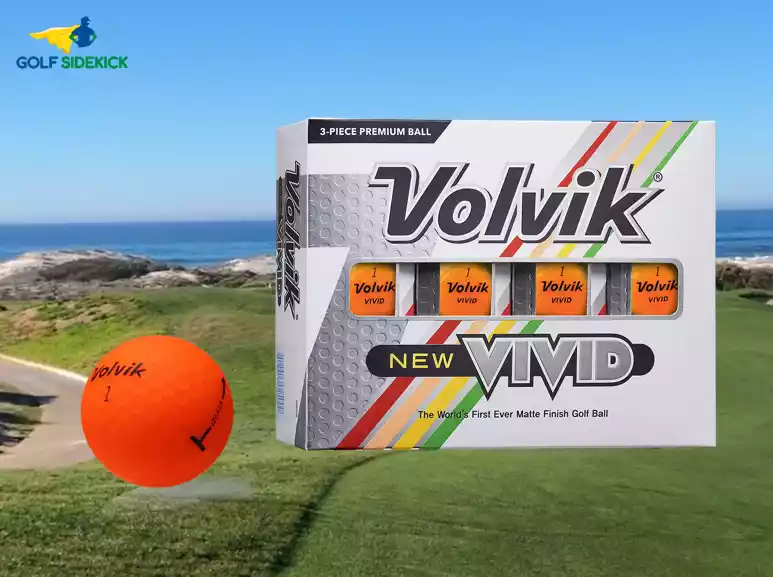
I would say that this ball is a combination between a Titleist Tru Feel and Velocity - firm and long but surprises you when you chip by actually gripping on the club's grooves and on the greens.
The matte finish of the ball takes some getting used to but it gives it a distinct softer feel. That matte finish with the vivid colors these balls come in, make them practically impossible to lose while watching them in the air. The extra confidence of knowing I'll see and find my shot is the number one reason I recommend this ball - I just swing freer and easier at the ball.
Off the putter face the Vivid feels medium to hard with just the right amount of 'click' to tell you if you hit it well or not.
The first time I tried them was when I was given a sleeve of the Vivids at registration for a Hooters competition. They were bright Vivid orange. I'd heard how bright they were but wow, when you see them in person, they're BRIGHT!
I understood quickly why these are used in the World Long Drive championships - I noticed a few extra yards off the tee. But what is unique is just how easily you can track the ball for its entire flight. This makes it easy to see where my ball ends up if not in the fairway which is great for my confidence.
Bump and run chipping is excellent - it feels a bit hard off the club face but the matte finish cover feels like it's quite tacky and actually grips on the blades of grass on the green. For a firm ball, the Volvik Vivid doesn't roll out much on the chips so I could be more aggressive. It's not a golf ball for flop shots though.
If nothing else, it's a great conversation piece! People never get tired of seeing my bright little balls. Check out the full Volvik golf ball guide here.
Reasons to buy
Cons
Mizuno RB 566 V
Low compression ball for slower swing speeds
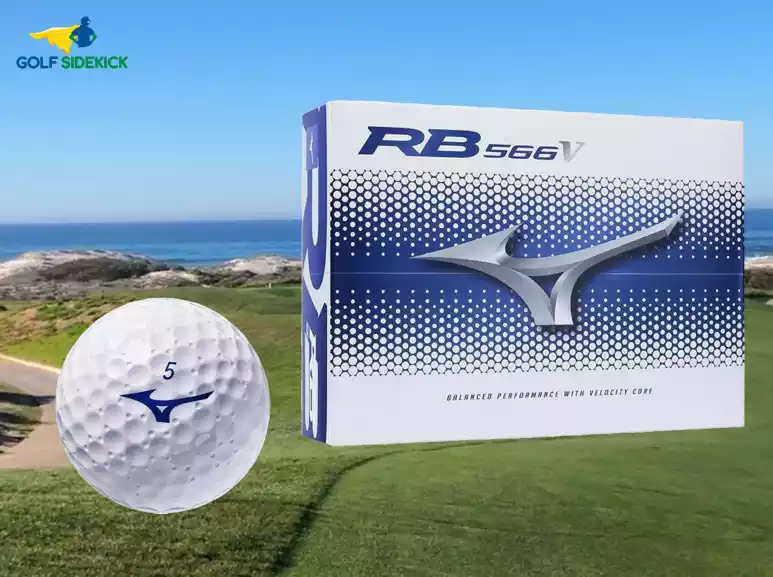
I can admit I had never thought to try Mizuno golf balls. I have played their irons extensively but until I had these recommended to me, I had never hit a Mizuno ball. It turns out I was wrong to doubt that a company with as much golfing pedigree as Mizuno could produce an inferior product.
Joe, who lives in the UK and contributes to this site has played these too and he has found them to be very good in cold and wet weather conditions. The 588 dimple pattern and low compression construction cause the ball to fly higher which is ideal for mid handicappers with slower swing speeds.
Around the greens, this ball feels really, really soft. It doesn't spin as much as some of the premium balls, but I could get it so sit down on some pretty firm summer greens. Off the putter face there is a satisfying "click" which provides good feedback for your stroke.
Joe swings it faster than recommended for this ball but didn't find it penalized him with the driver in hand. The ball still launches high and he found that it actually gave him a bit more control and he was confident finding fairways with this ball.
Mizuno make high quality golf products and this ball is no different. After 18 wet and cold holes of golf, the cover of the ball still looked clean and bright. The ionomer shell didn't scuff up after bunker shots and the logo and alignments line were clear to see.
These are a sleeper pick and definitely worth trying. The price is excellent too.
Reasons to buy
Cons
Key criteria for the best golf balls at average swing speeds
The best golf balls for this range of swing speeds have medium compression (hardness). Golfers with slower swing speed are obsessed with ultra low compression balls, and this isn't our best bet at 85-95 mph. Anything between 55 and 70 will be the best golf ball for your swing speed.
85-95 mph swing speed is fast enough to put a decent move on the ball so medium compression golf balls are some of the best golf balls for 85 mph swing speeds. Of course, the driver swing speed is 85 mph to 95 mph but when we use irons, that speed will drop down to probably 70 to 80 mph with steel shafts and iron heads.
The only thing you need to decide is whether you want a urethane (soft and spinning) cover or a surlyn (firmer with less spin) cover.
Golf ball cover material and how it affects your golf ball
Urethane
Urethane will give you more spin around the greens and hold greens more easily and is the material on Tour golf balls. It feels SO MUCH softer on the club face and grips onto the grooves much easier for more spin.
The drawback of urethane covered golf balls is that urethane is very soft and can blemish and scratch very easily. If the ball hits a cart path or tree or you rip a wedge, then the cover can scratch easily. Weigh this up versus how many balls you last the entire round with. A urethane ball will be good for one entire 18 hole round.
Urethane will hold greens really well but also remember, with more spin being generated after impact, by default, that also means the ball will spin more sideways, which can accentuate a big slice.
Surlyn
Surlyn is the material used on most two-piece golf balls and is durable but produces much less spin than a urethane ball. It will run out more on drives and approaches as well as needing more space to roll when chipping onto the greens.
The surlyn covered golf balls really do last longer in regards to the cover. They don't scratch easily and they don't scuff too badly from road hits. Wedge hits hardly make a difference to the cover as well. If you're skilled enough to use a ball for more than one round, you could probably get 3 rounds of 18 out of one ball before it will be too shabby.
Weigh up the options by picking your priorities: price, durability, feel on the club face, spin needed on approaches and chips, straighter ball flight or longer tee shots.
What exactly does swing speed indicate?
When we talk about 85 mph or 90 mph swing speeds, we're referring to the speed of the head of the driver when swinging toward the ball.
Tour pros are averaging about 110 to 125 mph! Isn't that crazy?
So at that swing speed, they're able to take advantage of the extra tech put into those Tour balls. While these balls might not hurt your game if you're consistent, the extra spin you get with them can be to your detriment with off line shots going further....off line!
Should 85 to 90 mph swing speeds use hard or soft balls?
It's all about your priorities.
The latest trend in golf ball technology is an obsession with lowering the compression (hardness) as far as it can go. Wilson even makes a ball with a 29 compression. Tour balls are around 90 to 100. There are benefits to the low compression balls especially if your swing is slower but in general the best golf ball for 85 mph swing speed and up to 90 mph swing speed is going to be something in between hard and soft.
A swing speed in your range can compress the ball enough to extract maximum distance and spin from a medium compression golf ball. But when looking at medium compression golf balls, it's the cover of the ball that makes the big difference between being "hard" & "soft" feel and performance.
Which balls won't get cut up and scuffed?
Urethane covers are less durable and will get scuffed from hard wedge shots and hitting trees, paths and concrete. Surlyn (also known as ionomer, trionomer etc) don't scuff nearly as much and I've played with guys who've used the same surlyn covered ball for 3 rounds in a row.
Does swing speed matter when selecting a golf ball?
It is very important to choose a golf ball that matches your swing speed. Golfers with slower swings compress the ball less than a faster swing speed golfer can.
Usually a slower swing speed means less distance but can vary depending on how WELL you strike the ball. A lower compression ball can help you to compress it easier and generate more distance with lower spin.
Is low spin off the tee important?
Low spin off the tee helps moderate speed swingers to get more distance because your drives will roll a bit further after landing, as opposed to just dropping and stopping.
If you are a player who slices the ball, this means you're generating a lot of side spin so a lower spin golf ball will reduce the impact of that sidespin on your shot shape.
Around the greens, you want some more spin though, to constantly land and roll the ball to the hole. It's a balancing act between distance and spin depending on your priorities.
Difference between premium balls and distance golf balls
A premium golf ball is expensive because it's made of premium materials and the prices range upward of $30. The value or distance ball is made of lesser technology because it has a different player in mind. Prices are much lower on a distance golf ball because of this.
You get two camps of golfers. There are golfers who only play premium lines of golf balls. Then you get other golfers who will play anything.
The big difference between the two types of balls are the number of layers and the cover material. The multilayer 3, 4 and 5 layer golf balls with urethane covers are your premium golf balls designed for pro's and elite players. The 2-3 layer balls with surlyn covers are the cheaper value balls that are designed for the average player.
A urethane cover in the premium balls means the ball scuffs easily because the urethane is very soft. The surlyn is a much harder material and is more durable.
Real life example
Let's look at a two piece Srixon Soft Feel golf ball versus the five piece TP5. Price difference is large. The TP5 gives you the golfer, all the tech and necessities that the pro's need. Do you have the skills to fully use the expensive balls and do you lose many in a round? The Srixon Soft Feel gives you a more resilient cover but you do not have a product filled with tech needed to execute pro shots.
Unless you're a very good golfer, with a low handicap and multiple layers of skills, you won't notice much difference in performance between the two styles of golf balls.
Conclusion
Extra spin will need a urethane cover while a Surlyn cover found on most two piece balls are going to give you extra distance. The best advice I can give you for golf balls is to take two or three different kinds out on the course and test them on your drives, on the par 3 tees and with your pitching and chipping. Find one you like and stick with it. Easy life!
At 85 mph to 90 mph swing speed, there is an endless supply of great golf balls and I highlighted a few for you here. Check out breaking 90 every time you play and if you're looking to pair a ball up with a driver for more distance, check out my guide on the best drivers for 90 mph swings.

